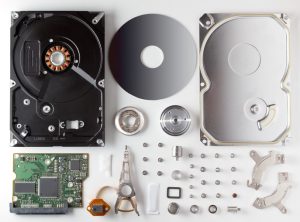Finding a secure way to restore deleted files

Every year, organisations spend time and money trying to restore deleted files that have accidentally been erased internally. When users follow company procedures regarding file management or when they need more space on the system, disaster can happen, especially if there isn’t any back-up in place to rebuild it quickly. The consequences of accidental file deletion can therefore be very serious and costly.
When working on restoring lost files, it is important to work with the data itself. The main aim is to avoid accidental overwrites or file corruptions. Whatever the type of data storage device – a standard hard drive, an external hard drive, a SSD, a RAID, a NAS, a server or any other data storage device, or the format – Windows, Mac OS, Unix, Linux or any other operating systems – the same procedures apply and there are often ways to recover the deleted data without any loss.
What happens to a file when you delete it on a data storage device?
When a file is deleted or removed from the recycle bin, the file still exists and it’s the information about the location of the file that is erased. Given that the information about the location of the file has been deleted, the operating system is unable to fetch the file when the user is trying to access it.
Data storage is done in two steps with the allocation of blocks of memory to save it. The name of the file and the list of memory blocks which contain the data are listed in a directory. If the file has been deleted by the user, the memory block allocated to it will be marked as free to use but the block will still contain the information. It’s just the name of the file that has been erased and the storage device can’t see the file any longer. The data is still there until some other files are saved in the block previously held by the deleted file, and this is when an overwrite happens. That’s why it’s important to act fast as the longer a block is left without a file location name, the more likely it is to be re-used for another file.
Steps to take when you accidentally delete a file and you are no longer able to access it
Data overwrites are serious and can be a challenge for the data recovery process. This is the reason why, when a file is deleted, it’s recommended to turn the storage device and/ or the computer off immediately to avoid permanent data overwrites and make files impossible to retrieve. In addition, no data recovery software should be installed when data has been deleted because it can also overwrite the files in the block memory. The best option is to contact a specialised data recovery company that will carry out a raw recovery to prevent overwrites.
Data Retrieval is a professional data recovery provider which offers its data recovery services to restore deleted files securely to companies and organisations. With over 15 years in the field of data recovery, the company provides successful disaster recoveries in its London based secured data recovery lab located in Central London.
